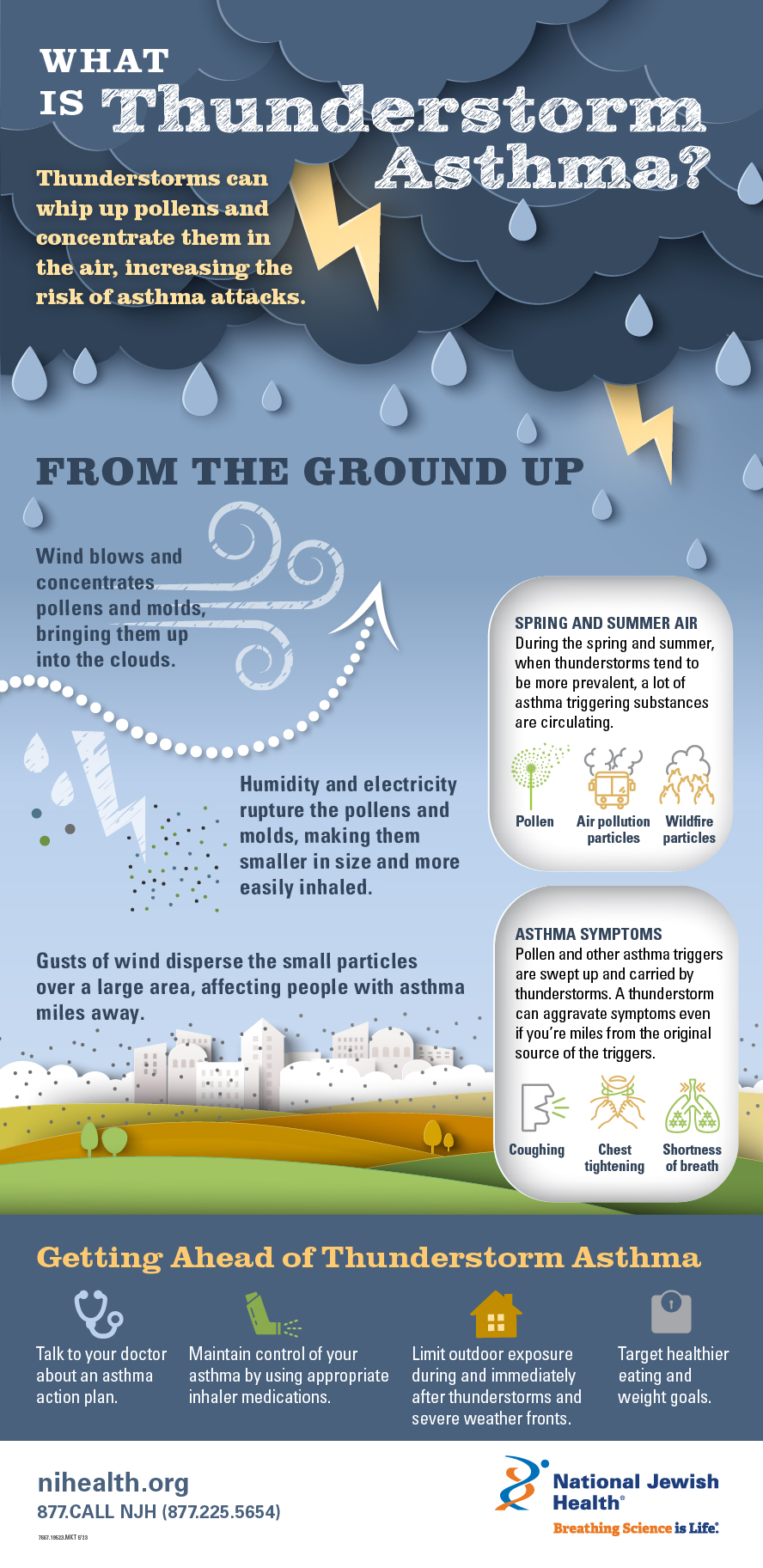
This information has been reviewed and approved by Laurie A. Manka, MD (June 2025).
What Is Thunderstorm Asthma
Thunderstorms can whip up pollens and concentrate them in the air, increasing the risk of asthma attacks.
From the Ground Up
Wind blows and concentrates pollens and molds, bringing them up into the clouds.
Humidity and electricity rupture the pollens and molds, making them smaller in size and more easily inhaled.
Gusts of wind disperse the small particles over a large area, affecting people with asthma miles away.
Spring and Summer Air
During the spring and summer, when thunderstorms tend to be more prevalent, a lot of asthma triggering substances are circulating.
- Pollen
- Air pollution particles
- Wildfire particles
Asthma Symptoms
Pollen and other asthma triggers are swept up and carried by thunderstorms. A thunderstorm can aggravate symptoms even if you’re miles from the original source of the triggers.
- Coughing
- Chest tightening
- Shortness of breath
Getting Ahead of Thunderstorm Asthma
- Talk to your doctor about an asthma action plan.
- Maintain control of your asthma by using appropriate inhaler medications.
- Limit outdoor exposure during and immediately after thunderstorms and severe weather fronts.
- Target healthier eating and weight goals.
More Information on Asthma